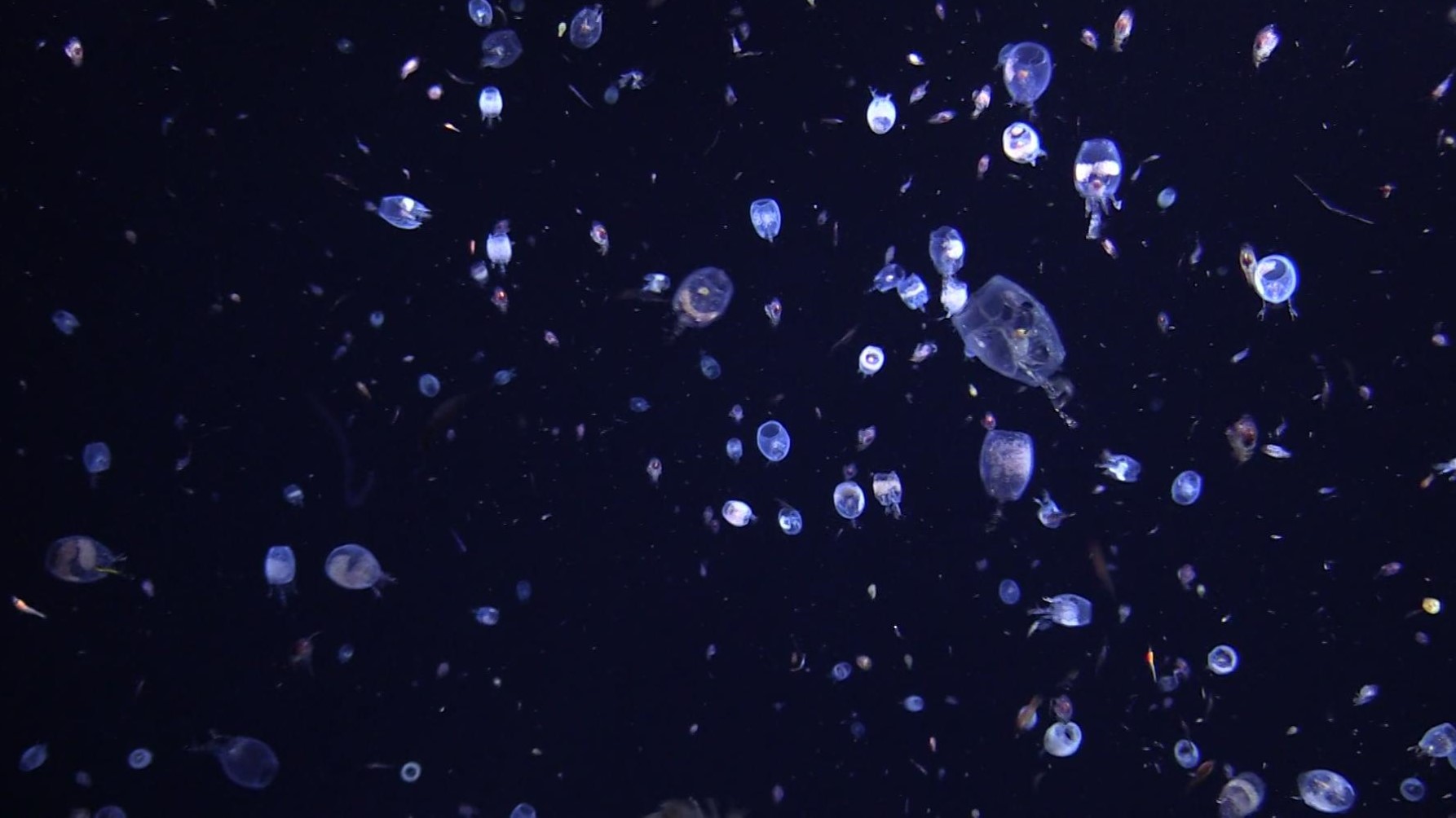Our expedition is part of ongoing research on biodiversity and food webs in the Macaronesian island region of the North Atlantic.
The expedition will focus on the pelagic deep sea around Madeira Island, an ecosystem that has been little studied. The main objectives are to document biodiversity and food web relationships, in particular the role of gelatinous macrozooplankton, also known as the “jelly web”.
The importance of these fragile organisms in deep-sea food webs has long been overlooked, in part because their fragility makes them difficult to sample intact. However, in situ observations show that they form a diverse community with numerous trophic interactions at mesopelagic depths. Jellyfish may play a key role in oceanic food webs and may be involved in the recycling and export of carbon to the deep sea.
Using a wide range of established and innovative in-situ observation and sampling methods, such as the use of towed cameras, the remotely operated vehicle PHOCA or various nets and the measurement of physical and chemical parameters, we hope to make a significant contribution to improving our understanding of the oceanic systems around Madeira and the role of jellyfish. In this way, we hope to make a long-term contribution to the protection of marine biodiversity and habitats around Madeira.

Über MSM126 “JELLYWEB MADEIRA”
Unsere Ausfahrt ist Teil fortlaufender Forschungsarbeiten zur Artenvielfalt und den Nahrungsnetzen in der makaronesischen Inselregion im Nordatlantik.
Der Fokus der Expedition liegt auf der pelagischen Tiefsee rund um die Insel Madeira, einem bislang kaum erforschten Ökosystem. Hauptziele sind die Dokumentation der biologischen Vielfalt und der Nahrungsnetzbeziehungen, insbesondere der Rolle des gelatinösen Makrozooplanktons, auch bekannt als “Jellyweb”.
Lange Zeit wurde die Bedeutung dieser fragilen Organismen für die Nahrungsnetze der Tiefsee vernachlässigt, auch weil sie wegen ihrer Empfindlichkeit nur schwer intakt zu beproben sind. In-situ-Beobachtungen enthüllen jedoch, dass sie in mesopelagischen Tiefen eine vielfältige Gemeinschaft mit zahlreichen trophischen Interaktionen bilden. Das Jellyweb könnte eine Schlüsselrolle in den ozeanischen Nahrungsnetzen spielen und beim Recyceln sowie Export von Kohlenstoff in die Tiefsee beteiligt sein.
Mit einer breiten Palette etablierter und innovativer In-situ-Beobachtungs- und Probennahme-Methoden, wie dem Einsatz von Schleppkameras, des ferngesteuerten unbemannten Tiefseeroboters ROV PHOCA oder auch verschiedenster Netze sowie der Messung physikalischer und chemischer Parameter hoffen wir, einen bedeutenden Beitrag zur Verbesserung des Verständnisses der ozeanischen Systeme rund um Madeira und der Rolle des Jellywebs zu leisten. Damit möchten wir langfristig zum Schutz der marinen Artenvielfalt und der Lebensräume um Madeira beitragen.